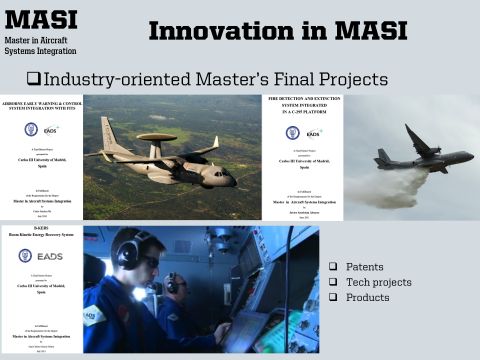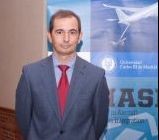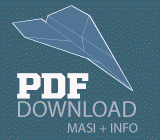Program
The MASI program comprises of 90 credits, including an industry-oriented Master's Final Project. Its modular structure allows for part-time study with a flexible completion date taking between 1.5 and 3 years.
The MASI Program combines three basic elements.
The MASI Program combines three basic elements.
- Fundamentals (M1), to provide the basis, the support to understand the technologies, the methods, the requirement.
- Generalization (M2), required to manage complexity and to understand the whole (systems thinking), and
- Experimentation (M3), to move from abstraction to implementation, innovation, invention.

M1. Introductory Level (16.6 credits).
Courses in the Introductory Level provide the technical knowledge necessary to understand how the different aircraft´s systems work.
Introduction to Aircraft Systems Integration (2.4 credits)
Fundamentals of Aeronautical Engineering (6.0 credits)
Onboard Electronics and Instrumentation (3.2 credits)
Aeronautical Communications (3.0 credits)
Introduction to Aircraft Control (2.0 credits)
Courses in the Introductory Level provide the technical knowledge necessary to understand how the different aircraft´s systems work.
Introduction to Aircraft Systems Integration (2.4 credits)
Fundamentals of Aeronautical Engineering (6.0 credits)
Onboard Electronics and Instrumentation (3.2 credits)
Aeronautical Communications (3.0 credits)
Introduction to Aircraft Control (2.0 credits)

M2. Core Level (15.6 credits).
The Core level is aimed at providing the global systemic vision required to manage the large and complex aeronautic projects. The focus is on the procedures, methodologies, tools and agents common in all systems integration projects. It includes general courses like Systems Engineering or Project Management, and others more specific for the aeronautical context, but transversal in the integration processes.
Systems Engineering (3.2 credits)
Airborne Software and Hardware (3.0 credits)
Aircraft Certification and Safety Analysis (3.0 credits)
Aeronautical Projects Management (1.6 credits)
Design and Configuration Management of Aircraft Systems (1.6 credits)
Aircraft Electromagnetic Compatibility (2.4 credits)
Data Engineering for the Digital Aircraft (0.8 credits)
The Core level is aimed at providing the global systemic vision required to manage the large and complex aeronautic projects. The focus is on the procedures, methodologies, tools and agents common in all systems integration projects. It includes general courses like Systems Engineering or Project Management, and others more specific for the aeronautical context, but transversal in the integration processes.
Systems Engineering (3.2 credits)
Airborne Software and Hardware (3.0 credits)
Aircraft Certification and Safety Analysis (3.0 credits)
Aeronautical Projects Management (1.6 credits)
Design and Configuration Management of Aircraft Systems (1.6 credits)
Aircraft Electromagnetic Compatibility (2.4 credits)
Data Engineering for the Digital Aircraft (0.8 credits)

M3. Advanced Level (21.8 credits).
This module focuses on the integration of specific systems, like the Fuel, Hydraulic, Electric, Avionic Systems...The idea is to apply the general and common methods and tools to each aircraft system, to each subsystem, part, etc.
Antennas Integration (1.4 credits)
General Systems (5.0 credits)
Communication Systems (2.0 credits)
Surveillance, Identification and Mission Systems (2.6 credits)
Air Navigation Systems (2.2 credits)
Presentation and Flight Information Systems (2.0 credits)
Weapons and Electronic Warfare System (1.6 credits)
Unmanned Air Systems (1.6 credits)
Seminars/Conferences/Labs (3.4 credits)
This module focuses on the integration of specific systems, like the Fuel, Hydraulic, Electric, Avionic Systems...The idea is to apply the general and common methods and tools to each aircraft system, to each subsystem, part, etc.
Antennas Integration (1.4 credits)
General Systems (5.0 credits)
Communication Systems (2.0 credits)
Surveillance, Identification and Mission Systems (2.6 credits)
Air Navigation Systems (2.2 credits)
Presentation and Flight Information Systems (2.0 credits)
Weapons and Electronic Warfare System (1.6 credits)
Unmanned Air Systems (1.6 credits)
Seminars/Conferences/Labs (3.4 credits)

M4. Practical Work (24 credits).
This module is designed to provide the students with the technical, professional and social skills needed to enter and/or develop an engineering career in the (aeronautical) systems engineering-related industry.
Group Design Project (4 credits)
This module provides an introduction to intensive group project work in collaboration with an industrial or academic customer. The objective of the Group Design Project is to encourage both innovation and engagement with the broader engineering context (financial, economic, social, environmental). The use of "real world" engineering problems requires students to actively engage with their customers to determine the scope and requirements of their project, in order to provide a realistic simulation of the sort of challenges that they are likely to face as engineering graduates.
Internship Placement (20 credits)
The MASI program offers full-time paid internship opportunities at leader aerospace companies. During the internship period (min. 720 hour), the students will solve real integration problems under the supervision of a Company Mentor. In addition to the real-work experience, the internship period helps MASI students to create a network of contacts very useful for finding permanent employment in the aerospace industry.
This module is designed to provide the students with the technical, professional and social skills needed to enter and/or develop an engineering career in the (aeronautical) systems engineering-related industry.
Group Design Project (4 credits)
This module provides an introduction to intensive group project work in collaboration with an industrial or academic customer. The objective of the Group Design Project is to encourage both innovation and engagement with the broader engineering context (financial, economic, social, environmental). The use of "real world" engineering problems requires students to actively engage with their customers to determine the scope and requirements of their project, in order to provide a realistic simulation of the sort of challenges that they are likely to face as engineering graduates.
Internship Placement (20 credits)
The MASI program offers full-time paid internship opportunities at leader aerospace companies. During the internship period (min. 720 hour), the students will solve real integration problems under the supervision of a Company Mentor. In addition to the real-work experience, the internship period helps MASI students to create a network of contacts very useful for finding permanent employment in the aerospace industry.

M5. Final Project (12 credits).
The Final Project consists of the development of a complete system's integration project under the supervision of an industry or academic advisor. The project will make use of methods and tools learned in the MASI curriculum. The Final Project culminates in a written project report and an oral presentation.
The Final Project consists of the development of a complete system's integration project under the supervision of an industry or academic advisor. The project will make use of methods and tools learned in the MASI curriculum. The Final Project culminates in a written project report and an oral presentation.


















